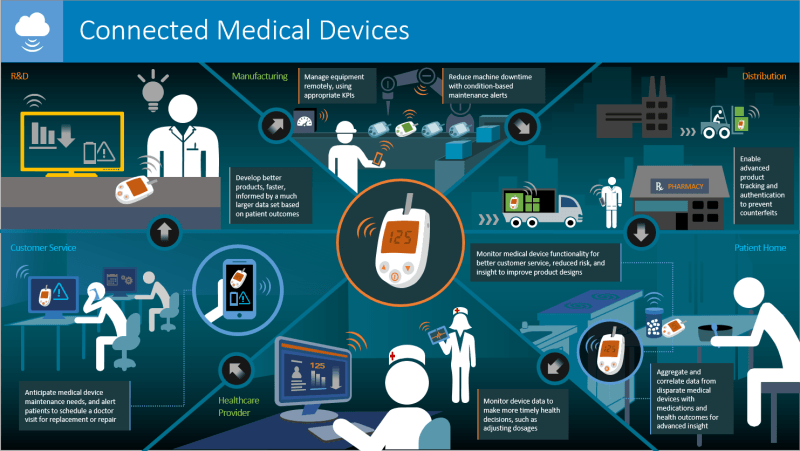As technology and the internet become ubiquitous across all places where people live, work, learn, and spend time, connectivity in healthcare facilities is becoming more and more relevant. As we discussed in a previous blog about senior living, the Internet of Medical Things is provoking a revolution in medicine and healthcare technology. This will not only be seen in senior living, but especially in healthcare facilities.
When the Health Information Technology for Economic and Clinical Health Act (HITECH Act) was passed by the U.S. in 2009, it became possible for medical records to be kept electronically. Home monitoring systems can now provide healthcare providers with patient information. Even when the patient is not able to go to the doctor directly, which is very beneficial for elderly patients.
With IoT, this electronic data can be used to open up a whole new world of healthcare. An array of internet-connected medical devices already exist. Some examples include automated insulin delivery (based on monitoring patient data through an app), connected inhalers, Bluetooth-enabled coagulation testing, wearable smart asthma monitors, and much more.

Besides the Internet of Things capabilities, connectivity in healthcare has also revolutionized the administrative component of hospitals. Before digitization became possible, administrative tasks took up an incredibly large chunk of hospital space and cost. With digitized patient records and online patient portals, paperwork has become much more efficient and less costly than ever before.
Patient data has also become streamlined to be more secure via the internet. Files can be transferred confidentially, with no worry of HIPAA noncompliance.
Unlimited collaboration is now possible because of internet connectivity. Medical researchers from all over the world are unrestricted in their communication on important medical issues and scientific findings. This would all be impossible if not for the internet.
In the coming decades we will see an explosion in medical possibilities due to technology. Proving why having the most advanced technology and internet connectivity is so important for the healthcare facilities of today.


